I didn’t plan to write about Shimonoseki today. As I mentioned during Friday’s blog post, I thought of this city (the westernmost of Honshu island) as an epilogue to my San’in trip, and assumed I would have something to say about it in several days or weeks.
But a curious thing happened yesterday morning. After having spent my first couple hours in the city working on my computer in Starbucks, I set out in search of Shimonoseki’s most infamous local delicacy: Fugu, or tiger puffer fish, whose lethal reputation I first learned about on an episode of the Simpsons in the early 90s.
I walked about 15 minutes eastward from the station, toward an eatery the lady at the tourist information both had told me was a good place to have my first taste. “Go away,” the disheveled-looking man who emerged suddenly from behind the counter after I walked in spat at me, arms flailing. “No more lunch!”
Wholly Uplifting
I tried to reason with him once my shock wore off, pointing to the sign on the door (which indicated that lunch ended at 2 pm) and the time on my phone, 12:55. He gave so few fucks, however, that he literally encouraged me to post the one-star Google Maps review I threatened as a last-ditch effort.
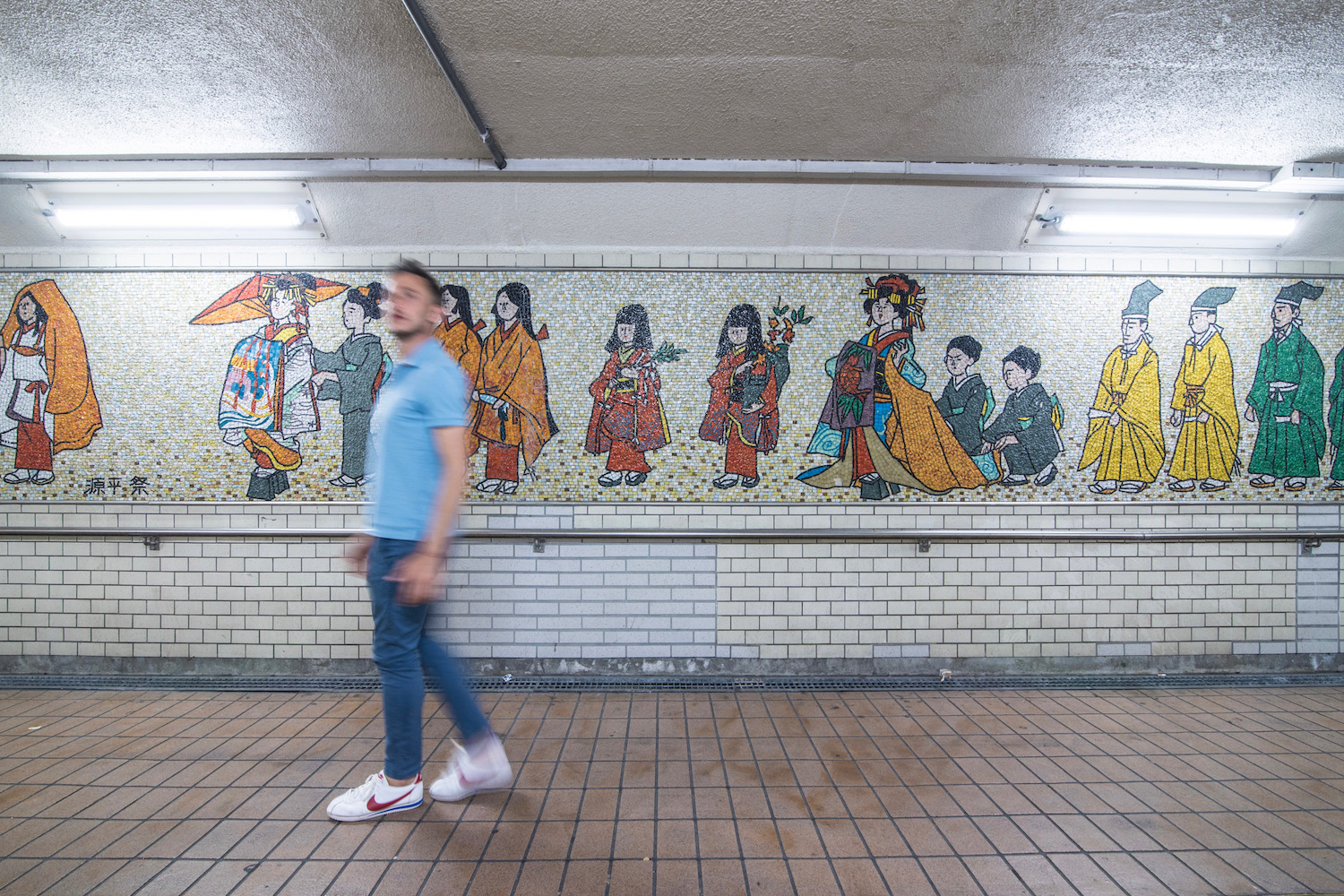
Back on the street I saw another disheveled-looking man, albeit a much friendlier one. “Watashi wa Hiroshi,” he introduced himself after having rattled off the name of half the baseball teams in America upon finding out where I was from.
I initially assumed he might’ve been a crazy homeless person, on account both of how he first spoke to me and how relatively poorly he was dressed. I now feel awful about that, of course, but I left the encounter feeling wholly uplifted—certainly, the slight I felt from the supposed best fugu seller in Shimonoseki was gone from my mind.
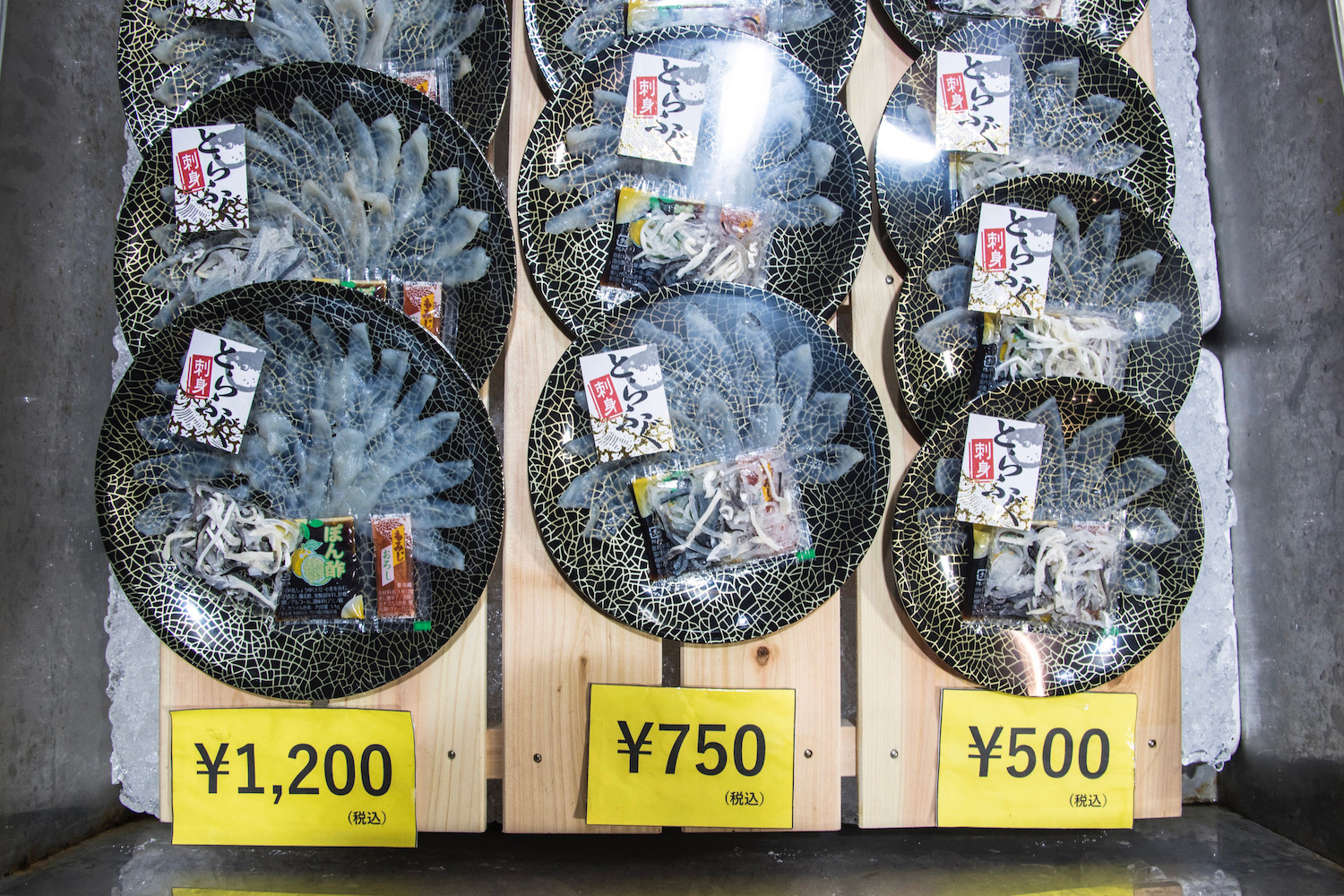
Re-energized, I found an extremely local seafood shop, one that actually stuck to its opening hours. And, to my surprise and delight, they had the poison blowfish!
So I Assumed
Surprise and delight—and terror, shortly thereafter.
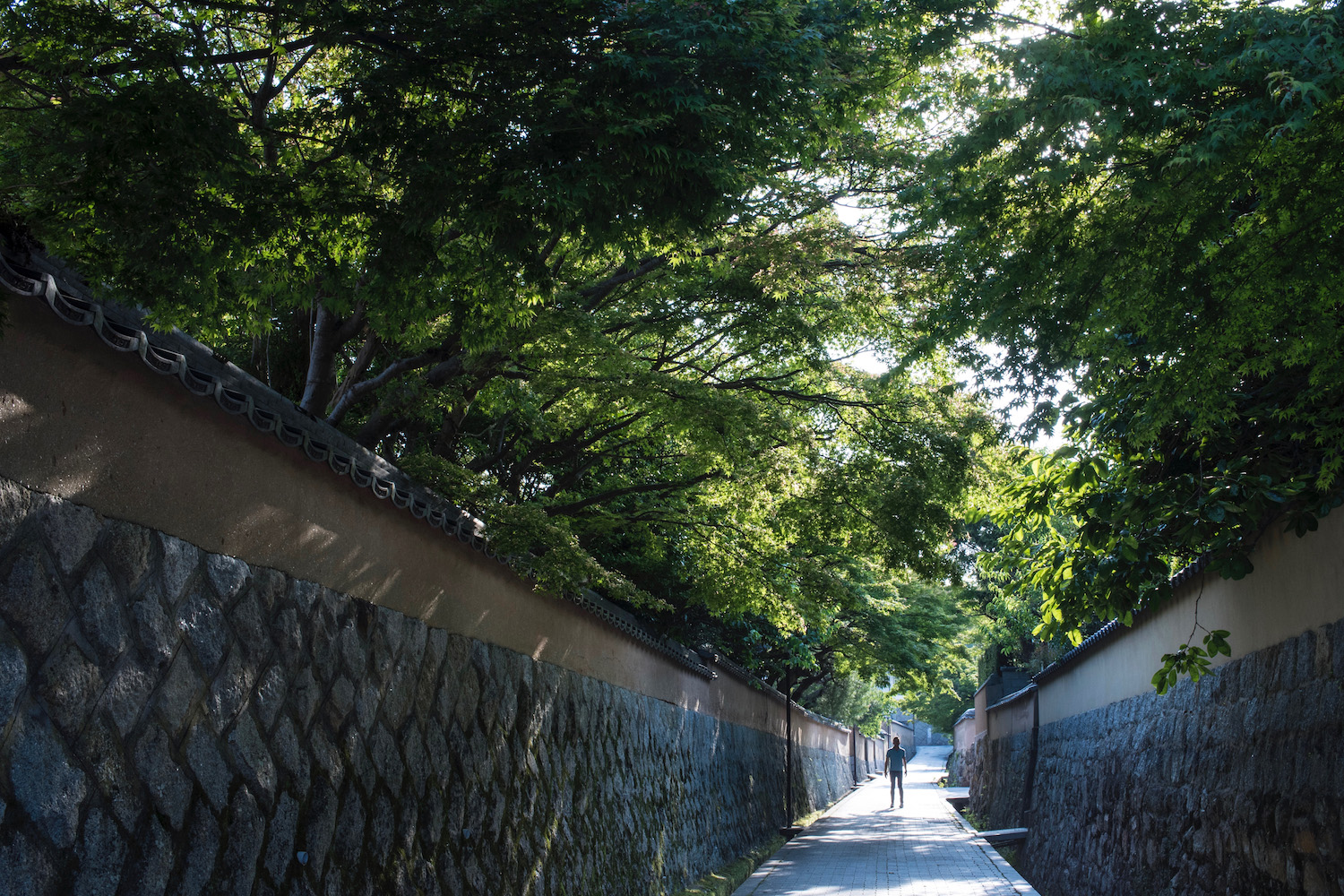
I’d ordered meat from the toxic fish prepared in what I can only describe as a ceviche style, not only because it was cheaper than the sashimi (¥800 vs ¥2,000) But because the gentle cooking action of the citrusy Ponzu sauce would neutralize any poison that remained in the flesh.
Or so I assumed. Upon Googling to confirm this fact (TIP: If you follow in my Shimonoseki footsteps, do this before you order!), I realized it most definitely was not the case. I also realized that unlike had been the case with Homer, who was told he’d succumb to the effects of the tetrodotoxin overnight, symptoms usually appear within 3-20 minutes.

I waited at my table until after I had passed this threshold, a fact to which the old woman waiting on me seemed all too attuned. She laughed ever so slightly as she handed me my change.
Beyond My Expectations
By this point it was around 3 PM, which meant that the entirety of the city was washed out in the light I so loathe. I checked in at Shimonoseki Grand Hotel, which I thought to myself as the musty elevator struggled its way up to the eighth floor must’ve last been “grand” around the time I was born.
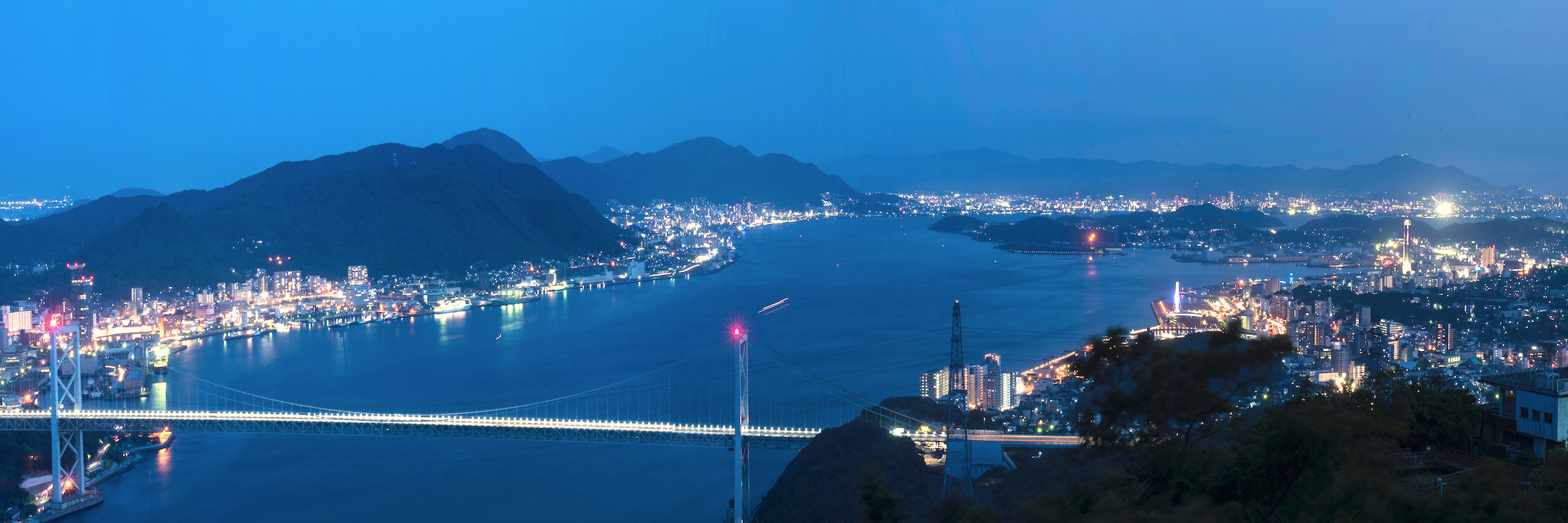
Not wanting to stick around lest I contract some sort of mold-borne illness, I headed back down to street level, walking past Karato Fish Market (which was closed—I’d have to wait until morning to see where fugu is bought and sold) en route to Akama Jinja, a blood-red shrine dedicated built in the 12th century to commemorate a child emperor killed in battle—Japan’s past is fucking dark.
I continued the historical theme of my afternoon as the light softened, first with a stop at Chofu-en, the former residence of a latter-day Samurai, which could’ve done with a little maintenance, but was beautiful beyond my expectations no less.
The legacy of the Chofu Mori clan hung heavy over the sprawling district to the north of the garden, where local school girls and little old ladies alike seemed oblivious to the beautiful and heritage all around them. (As a character is one of my favorite dystopian novels once said, “Ordinary is just what you’re used to.”
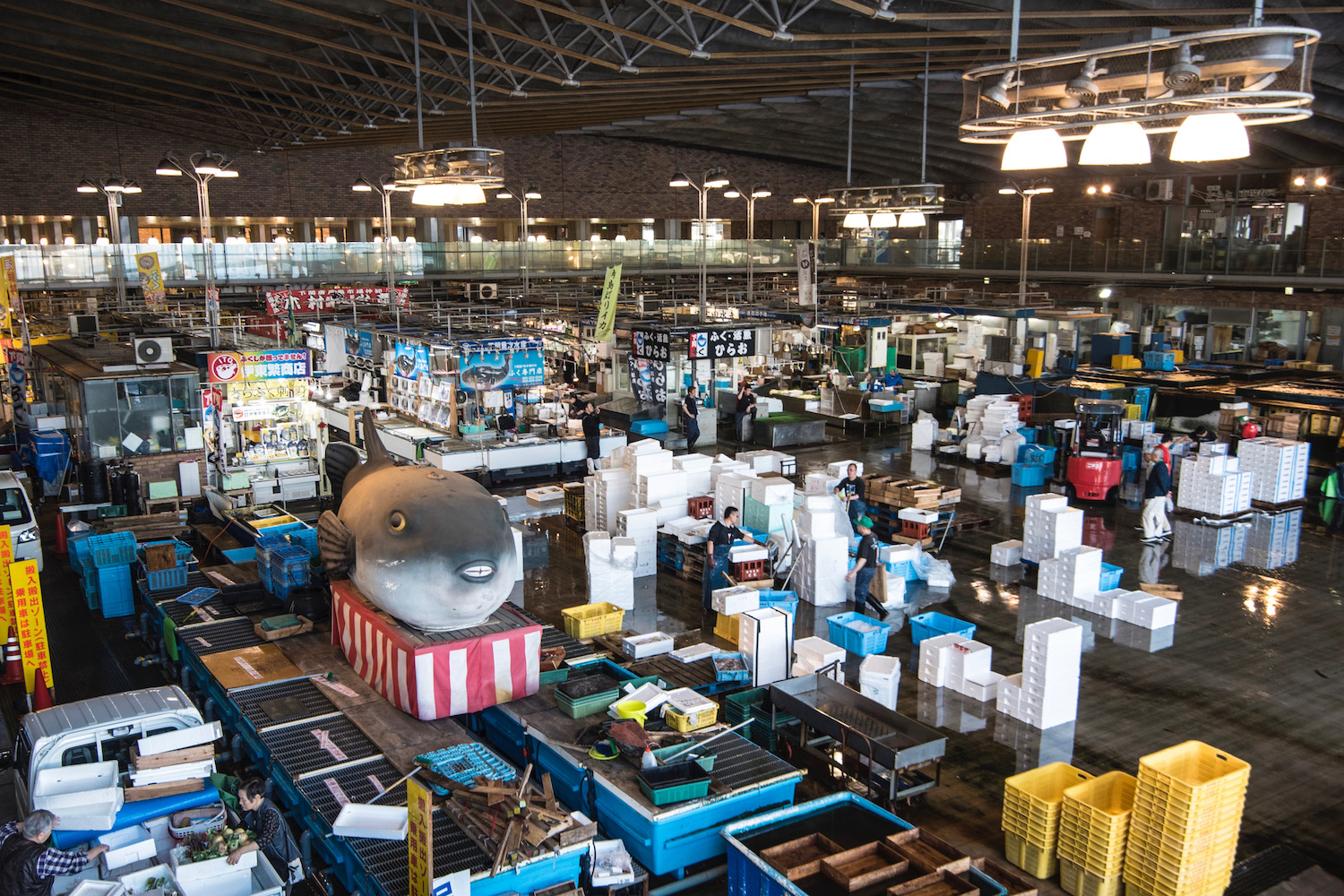
Which is not to say that anything about Shimonoseki (apart from my hotel room) is dystopian, even if the city is rough around the edges overall. Certainly, the view of the skyline lighting up around the rim of the Kanmon Straits, which separates Honshu from Kyushu, was a five-star sight to behold; the yakisoba I enjoyed at a hole-in-the-wall where a cook and a patron, who were both at least 80, discussed American politics as a sumo match played in the background, utterly oblivious to my presence, was maybe the best I’d ever had.
Other Drops of Beauty
There was one legitimately horrifying thing about my day in Shimonoseki, however. As I hiked up Hinoyama, from where I enjoyed the aforementioned view, I saw a warning about “aggressive wild boars in the neighborhood.” I witnessed and heard this aggressiveness from the viewing platform—thankfully, the woman standing up there with me offered to take me down in her car, lest I become hog food on the way down.
I ran under a cotton candy sky this morning, and thought the colors had dissipated by the time I returned and made the short walk to Karato Market, other drops of beauty were everywhere. Namely, a budding hydrangea bush that made sad I was going to miss the first weeks of the tsuyu monsoon. Maybe next year.
I searched the stalls of the market in vain for a real-life example of the famous fugu of Shimonoseki (or hell, even a carcass) but came up empty, I presume because no one on site was certified to prepare the fish. Ironically, the only time I’ve ever seen one was washed up on a beach five years ago in Tottori, where my epic San’in journey—which sadly ends in just a few minutes—began.
Other FAQ About Shimonoseki Travel
What is Shimonoseki known for?
Among tourists, Shimonoseki is known for being the city of fugu, the potentially lethal Japanese pufferfish made famous to Western audiences in an early episode of “The Simpsons.” Beyond this, it’s also famous for being the last city in Honshu island before Kyushu begins, and for being the place where an important military treaty was signed a couple of centuries ago.
What do you eat in Shimonoseki?
Fugu pufferfish is the most famous food from Shimonoseki. Although it can be dangerous or even deadly if prepared improperly, every shop in Japan that sells it must be licensed to do so. To enjoy the most delicious fugu, make sure to order it served as sashimi.
Why do people visit Shimonoseki?
People visit Shimonoseki primarily to eat fugu, although there are other reasons as well. Some people like the idea of being in the last Honshu city before Kyushu begins, including the fact that due to an undersea tunnel, you can actually “walk” between the two islands.






